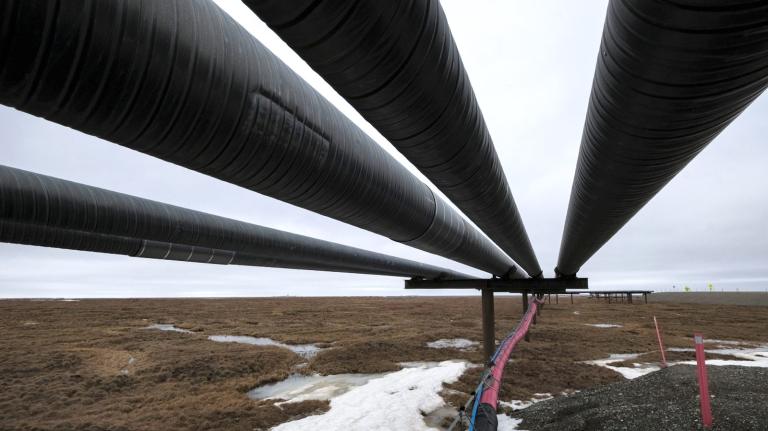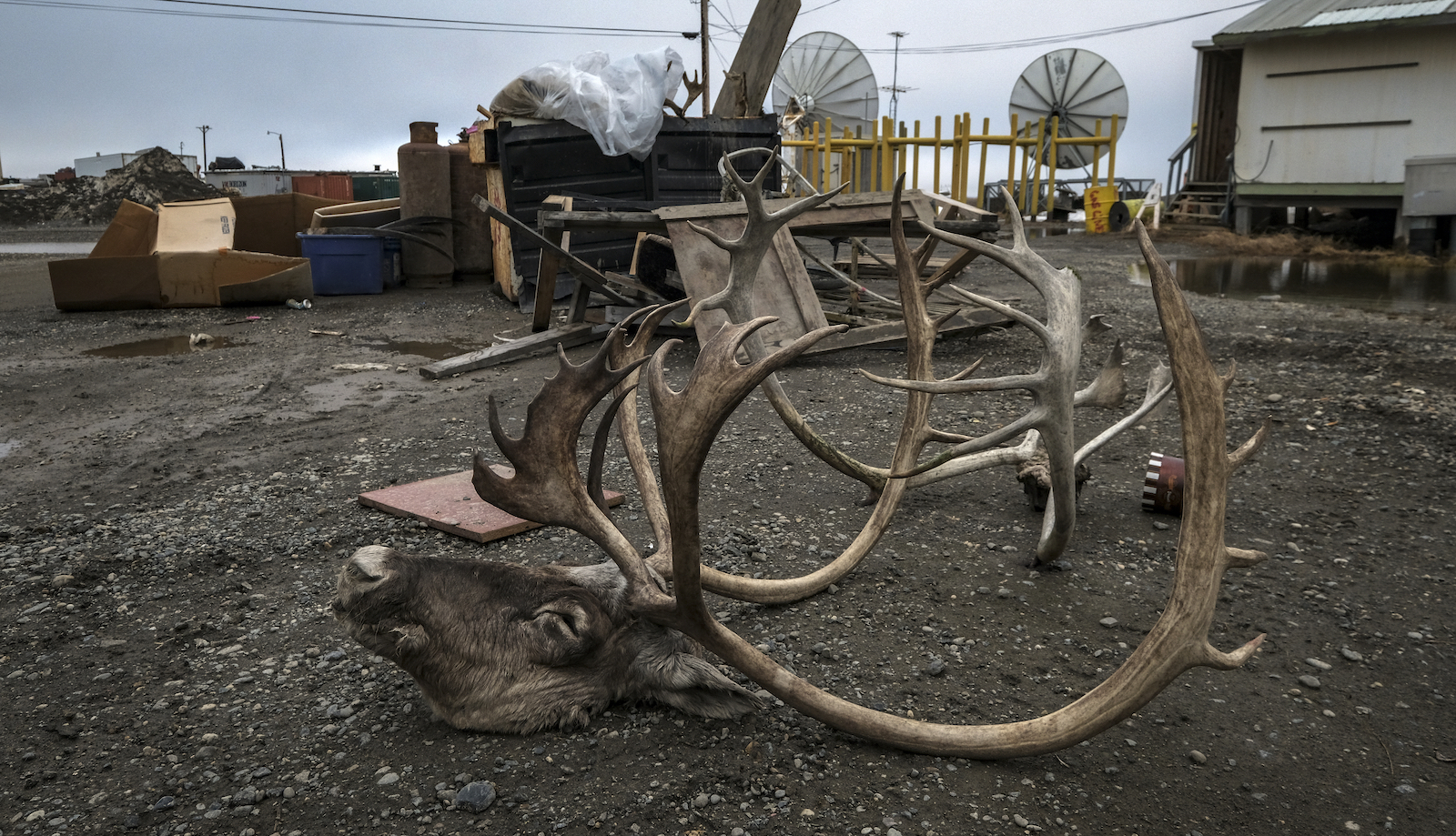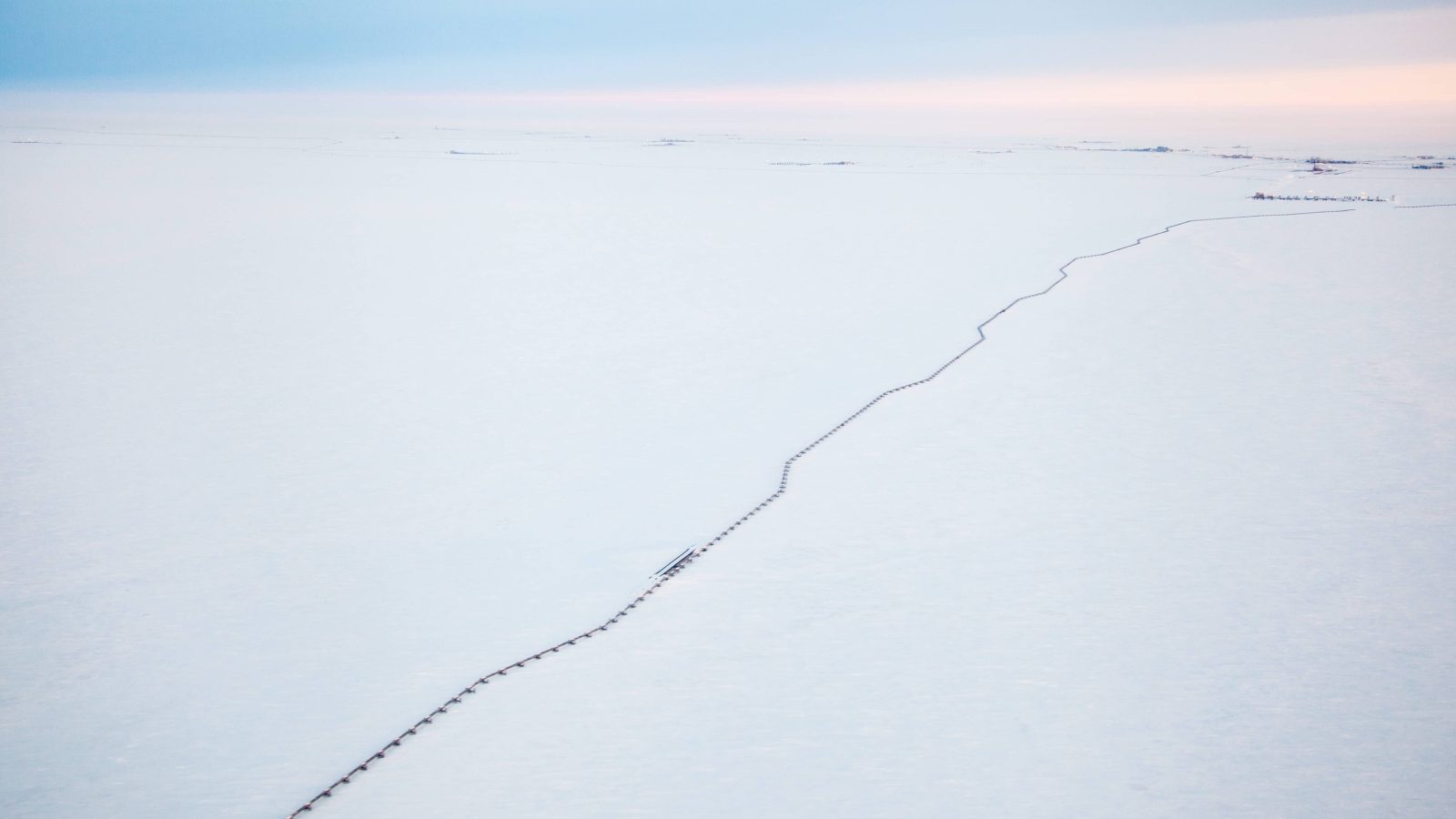For decades, Sam Kunaknana has caught grayling and hunted caribou along Fish Creek, a small river that meanders over the open Alaskan tundra near the Iñupiaq community of Nuiqsut. Kunaknana sets nets for broad whitefish, jigs for grayling, and waits for the caribou, which he remembers ambling in large herds across the muskeg years ago. Roughly three-quarters of the residents of Nuiqsut, which sits in the center of Alaska’s North Slope some 20 miles south of the Arctic Ocean, mostly eat foods harvested from the wild.
But in recent years, living off the land has gotten harder for Kunaknana, who’s 55 years old. Nuiqsut has slowly been encircled by oil wells and pipelines. “I could see development coming, as a kid, from the east,” Kunaknana said. Then the drill rigs crept north along Nuiqsut’s horizon. And now they are moving west.
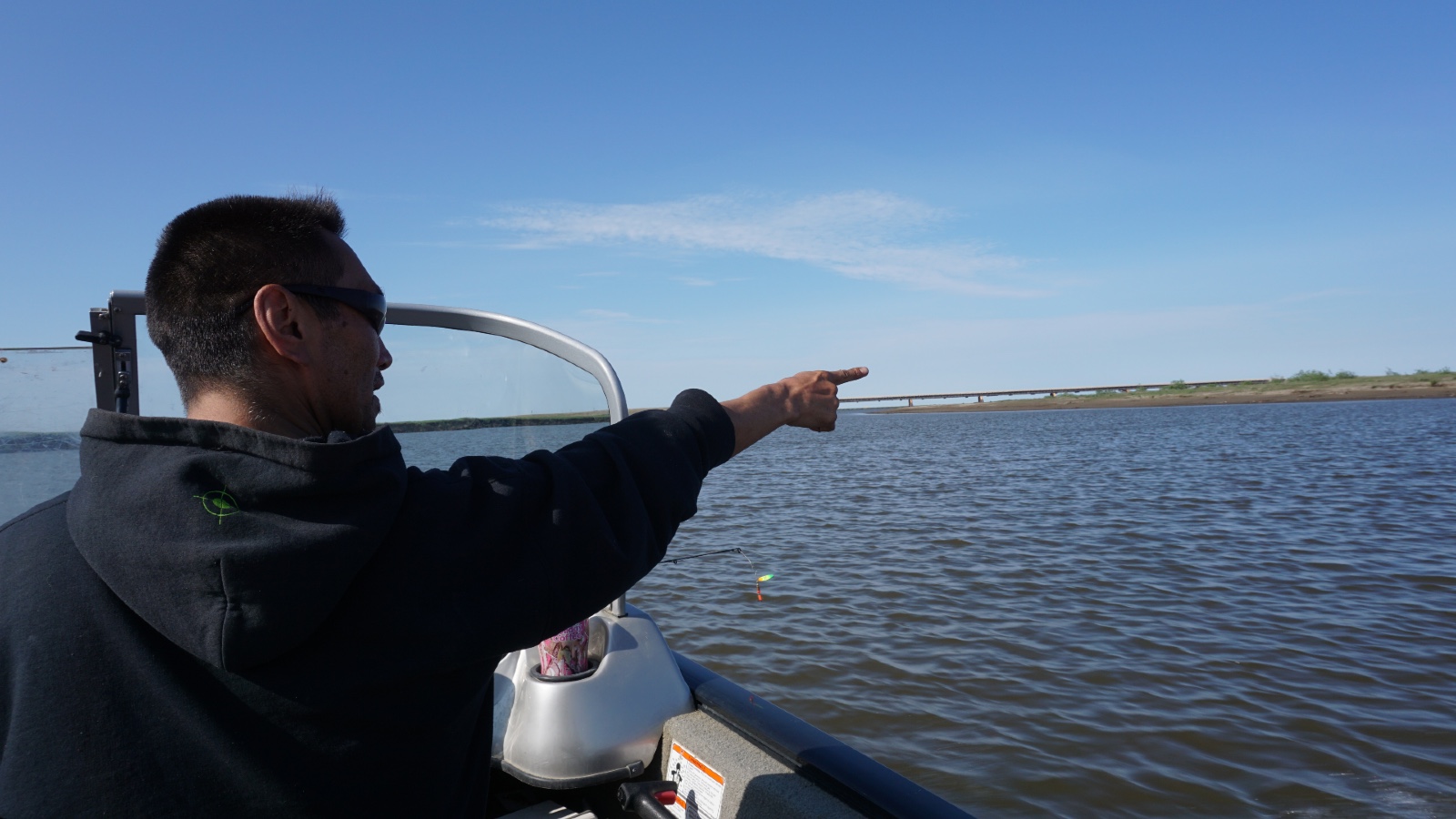
When the Biden administration greenlit ConocoPhillips’s Willow project last week, it set in motion a long-awaited but fraught expansion of Arctic drilling. The project, set within 23 million acres of largely undeveloped public land called the National Petroleum Reserve, will extend Conoco’s oil fields around Nuiqsut by tens of miles and lead to the construction of roads, bridges, and a drilling site near Fish Creek. By the time it’s finished, Willow could produce 600 million barrels of oil over 30 years, which would translate into 239 million metric tons of carbon emissions if it’s all burned, according to an estimate by the federal government. Labeled by climate advocates as a “carbon bomb” but seen by Alaska’s congressional delegation as a ticket to U.S. energy independence, Willow has sparked a national controversy over the tension between the country’s domestic oil supply and the Biden administration’s climate policy.
On the North Slope, the announcement inflamed a longstanding debate between those keen on fueling the region’s oil-dependent economy and those seeking to preserve the land, water, and wildlife that have sustained Iñupiaq people and their ancestors for millennia. “If they don’t get policies in place to protect our lifestyle, our heritage and our tradition — it’s going to go away,” Kunaknana said.
Many Iñupiaq leaders cheered the Biden administration’s move. There’s a “majority consensus” in favor of Willow among the North Slope residents, according to Nagruk Harcharek, president of Voice of the Arctic Iñupiat, a regional advocacy group. Oil revenue funds local governments as well as dividends to shareholders in the region’s Indigenous-owned corporations. According to an Alaska Department of Revenue analysis, Willow could put more than $1 billion into the coffers of the North Slope’s regional government and generate nearly $4 billion for local villages by 2053. About 95 percent of the North Slope Borough’s property tax revenue — some $400 million — comes from the oil and gas industry, including ConocoPhillips. The company produced 48 million barrels of oil on the North Slope last year, according to state data, and earned more than $2 billion from its Alaska operations.
But Kunaknana and elected officials at the City of Nuiqsut and the Native Village of Nuiqsut are worried about what the Willow development means for their future. Nuiqsut is the Iñupiaq village closest to the roads, bridges, pipelines, gravel mines, and trucks that come with oil development on the North Slope. In a letter to Interior Secretary Deb Haaland earlier this month, local elected officials called their area “ground zero for the industrialization of the Arctic.” That proximity to fossil fuel extraction has long troubled residents. A major natural gas leak occurred last year at a ConocoPhillips pad just eight miles from the town, prompting the company to evacuate 300 employees. “It was really scary,” said Martha Itta, a former tribal administrator of the Native Village of Nuiqsut.
Itta was the tribal government’s administrator in 2012, when mud and brown smoke blew out of a well operated by Repsol, a Spanish company, on the tundra 18 miles from Nuiqsut. Itta has been worried about the effects of the oil fields on tribal members’ health ever since.
“I’m upset [Willow] went through,” Itta said. “They are slowly depleting our subsistence. I myself am a hunter and fisherman, all year long. And it’s still not enough. I’m a single mother, and the store costs are way too high. Sometimes I can’t afford to go to the store.”
A half rack of soda at the only grocery store in town costs $17, Kunaknana said. A small carton of shelf-stable milk sells for $5. Replacing all the fish, game, and foraged foods people in Nuiqsut rely on with store-bought goods could cost households $30,000 a year, according to local officials.
In its decision this week, the Bureau of Land Management acknowledged that “cumulative effects” of current and future oil development may “significantly” restrict opportunities to harvest food by lowering the number of caribou in popular hunting areas and limiting access for hunters. As a mitigation measure, the project incorporates, among other things, construction of three new boat ramps for local hunters and fishermen. More broadly, Willow is expected to generate $2.5 billion for a federal grant program that funds an array of initiatives, from monitoring geese on the tundra to upgrading Nuiqsut’s playground.
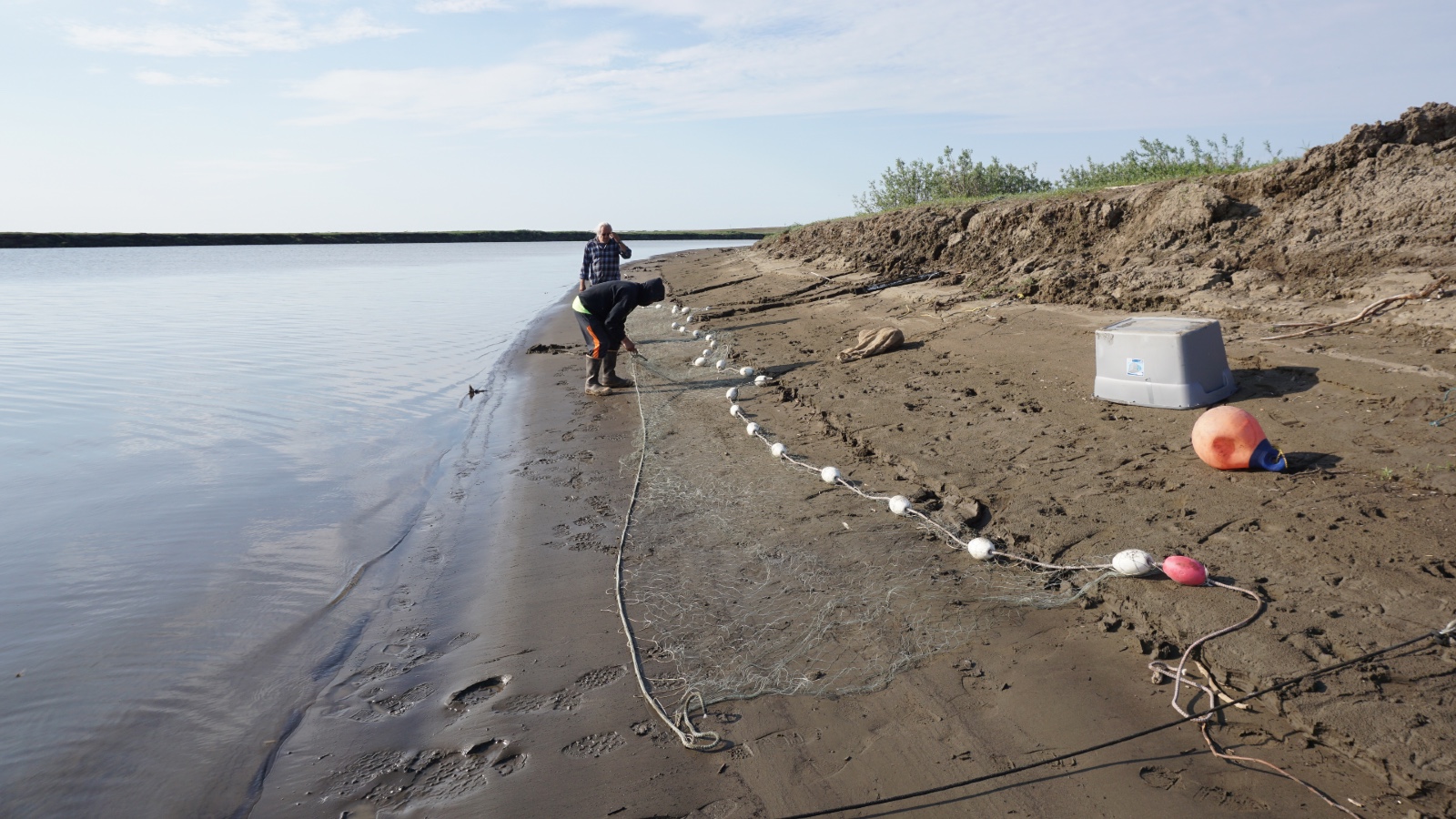
Executives at Nuiqsut’s Alaska Native corporation, Kuukpik, see the final project as a compromise after five years of planning. It “strikes an appropriate balance between the need to develop oil and gas resources and ensuring that Nuiqsut residents can continue to practice subsistence for generations to come,” Kuukpik representatives wrote in a letter to Halaand in February. They praised BLM’s intention to scale down the project’s original plans for five drill sites — rectangular gravel pads big enough to fit up to 80 wells apiece. BLM ultimately approved three pads. (Representatives from Kuukpik did not return requests for comment.)
Nuiqsut’s elected leaders, meanwhile, aren’t convinced that the proposed measures will protect caribou and fish. “We have gone through process after process, and the agency is always designing new mitigation, but the facts about what has happened to us and our land over this period are indisputable: the infrastructure has surrounded us, the caribou have left our traditional hunting grounds, and our mental and physical health has deteriorated,” local officials said in the letter sent earlier this month.
Within hours of the Biden administration’s decision, ConocoPhillips moved to build roads along the ice to the project, Alaska’s biggest in decades. Willow’s supporters say the oil extracted from the company’s 200 proposed wells will significantly boost flow in the trans-Alaska pipeline, which now carries less than a quarter of the 2 million barrels a day it once did. But experts told Grist last week that the project could lose money for Alaska’s state government in the short term. Moreover, a Grist investigation last year found that melting permafrost is an obstacle for Conoco, as Arctic warming could cause ground to buckle beneath Willow’s roads, rigs, and pipelines.
Kunaknana is skeptical of government and corporate assurances about the project. He sees fewer caribou close to town than he once did, and not as many fish swim into his net. Even when he catches some, they are increasingly sick with a mysterious disease, he added. “I was born into this subsistence way of life. I rely on this food,” Kunaknana said. “We’re just slowly being dissected away. Our culture is being dissected away.”
